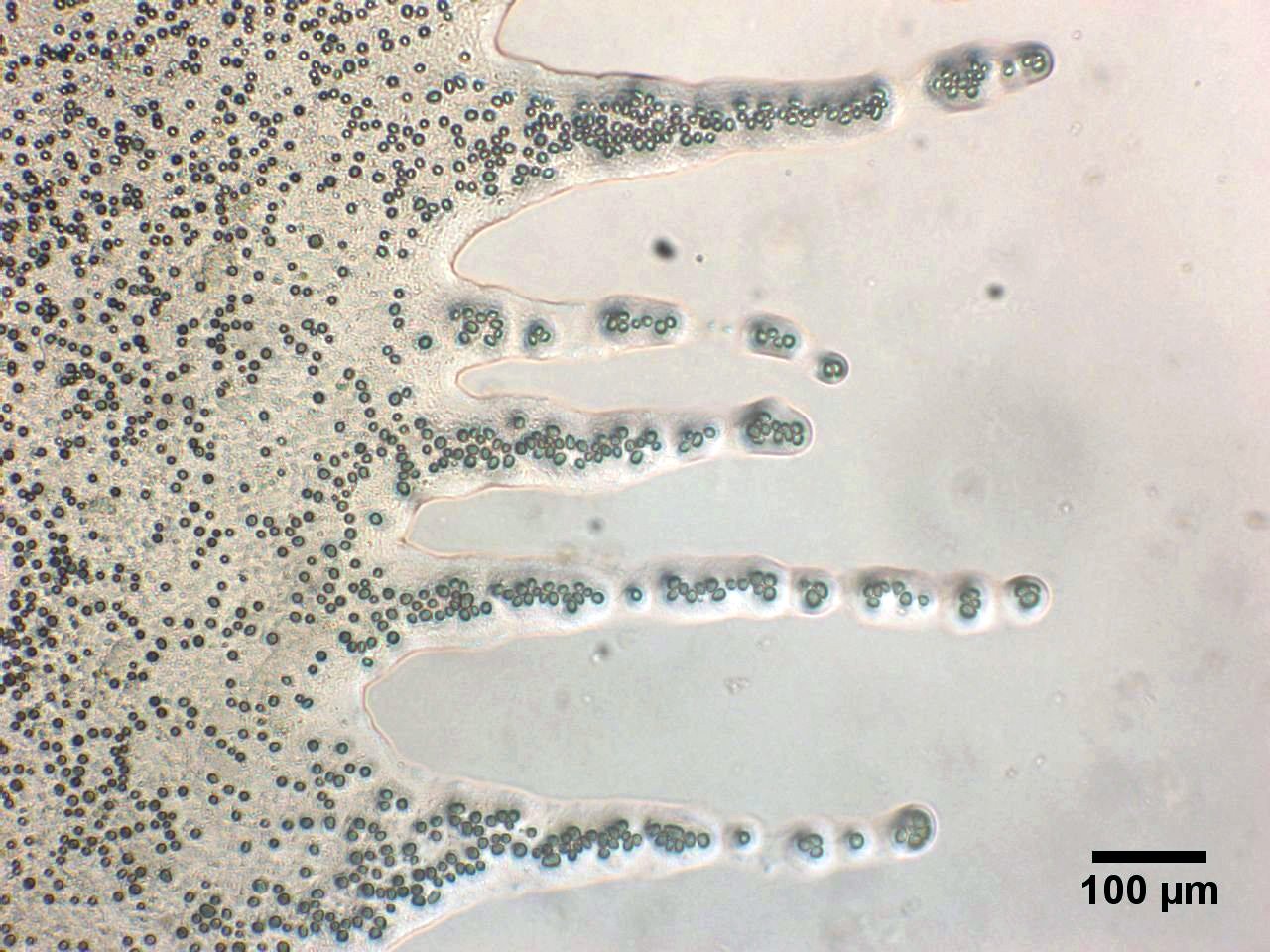New methods in bionics via the direct use of natural structures
Biofilms as construction workers

Whether it is wood, bone, mother of pearl, or teeth — over millions of years, these materials have been optimized via evolution according to the principle of adapted stability with the lowest possible weight. Nature has provided the blueprints for many technical developments. Examples include airplane wings, zippers, and surface sealants using a lotus effect. However, reverse engineering replicas cannot reproduce the structural complexity of the original in nature.
“In nature, we find many materials with properties that artificial materials are unable to replicate in the exact same fashion,” said Professor Cordt Zollfrank, who performs research on basic principles for the development of new materials together with his team at the Chair of Biogenic Polymers at the TUM Campus Straubing for Biotechnology and Sustainability.
Biggest Problems at the Smallest Level
As the interface between biology and technology, bionics utilizes methods and systems found in nature to provide solutions to technical problems. When it was still limited to using natural shapes, e.g. as templates for development in the design of airplane wings or ship hulls, the problems remained manageable. However, imitating the material properties of natural construction materials is an entirely different story. This is because they are found in the inner structures, where fibers are linked to each other over several orders of magnitude and across various hierarchical levels.
“Usually, the main sources of mechanical material properties such as elasticity, strength, and toughness are found at the smallest level of these hierarchies, especially at the nanometer scale,” explained Dr. Daniel Van Opdenbosch, a team leader at Zollfrank’s chair and one of the authors of the article, describing the main problem when attempting to translate them to technical solutions. However, when the microorganisms themselves or their secretions create the material, the technically sophisticated complex networks already come fully formed.
The Future of Bionics
In an article for the journal “Advanced Materials”, the researchers at TUM present a series of procedures from the field of biology that utilize light, heat, specially prepared substrates, and other stimuli to guide the direction of movement of microorganisms along very specific paths. “These biological findings for controlling microbes via targeted stimuli will shape the future of material research,” said Professor Cordt Zollfrank. This is because they make it possible to create tailor-made templates for new materials with natural structures from the microbes themselves or their secretions. “With our article, we want to show the direction this journey will take us in the field of biologically inspired material science,” said the professor.
Contact-Free Modeling
Daniel Van Opdenbosch and his group are already successfully utilizing some of these methods in Straubing. As part of a Reinhart Koselleck project of the German Research Foundation (DFG), the researchers are taking advantage of the special properties of red algae, whose direction of movement depends on exposure to light, and which secrete chains from sugar molecules. By projecting light patterns which change over time into the growing medium of the algae, the researchers use them to create long, fine polymer threads, which serve as custom templates for the manufacture of functional ceramics.
With the help of the algae, any number of templates can be created for a wide variety of applications, ranging from battery electrodes to new screen and display technologies to applications in medicine, such as replacement bone and tissue. Although the ability to grow complex microstructures such as entire components and other hierarchically structured materials is still a long way off in the future, it could soon become a tangible reality thanks to the basic research performed by the researchers at Straubing.
Publication:
Steffi Deuerling, Sabine Kugler, Moritz Klotz, Cordt Zollfrank and Daniel Van Opdenbosch: A perspective on bio-mediated material structuring, Advanced Materials, 2017. DOI: 10.1002/adma.201703656
Contact:
Technical University of Munich
TUM Campus Straubing for Biotechnology and Sustainability
Dr. Daniel Van Opdenbosch
Chair of Biogenic Polymers
Group Bio-mediated material synthesis
Phone:+49 9421 187 452
Mail: daniel.van-opdenbosch@tum.de